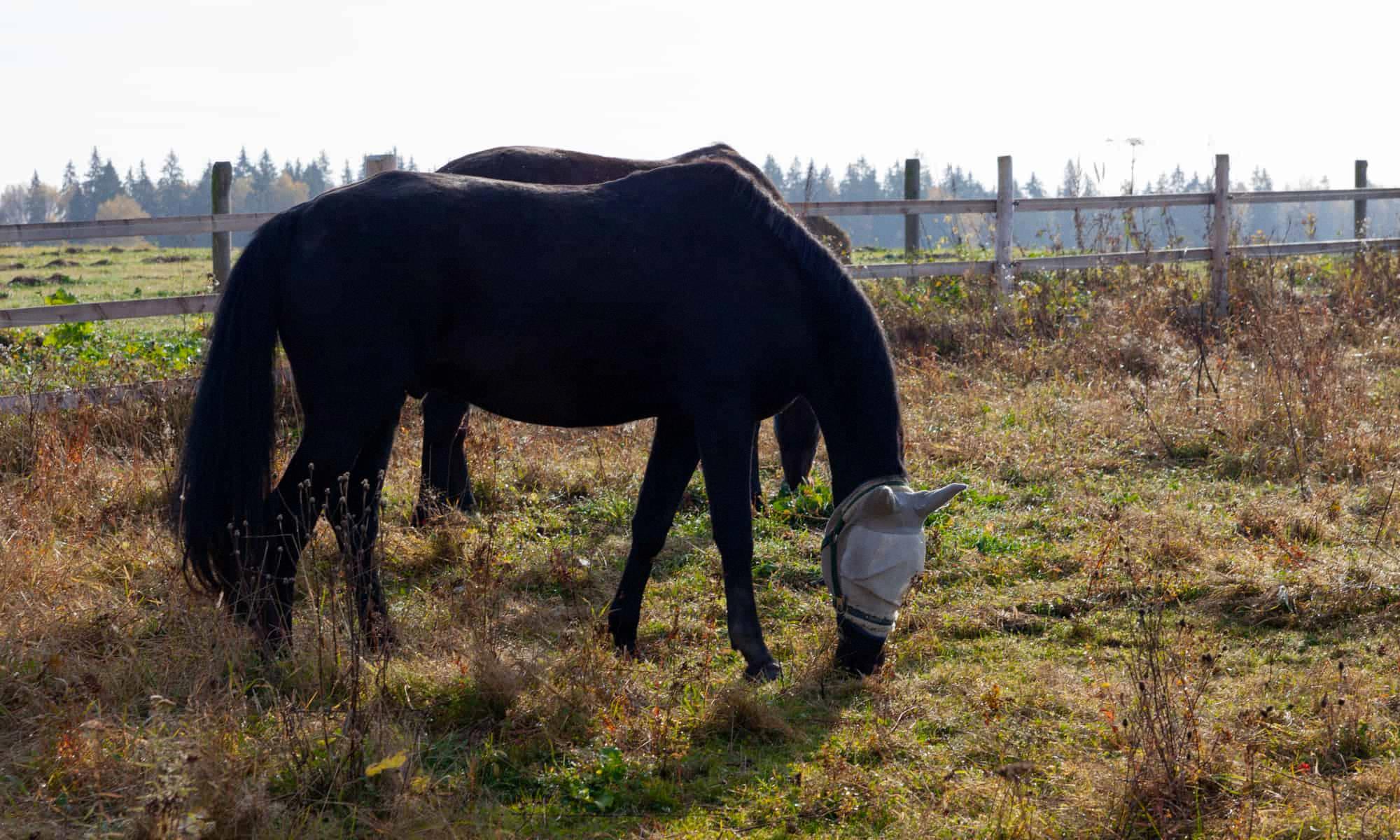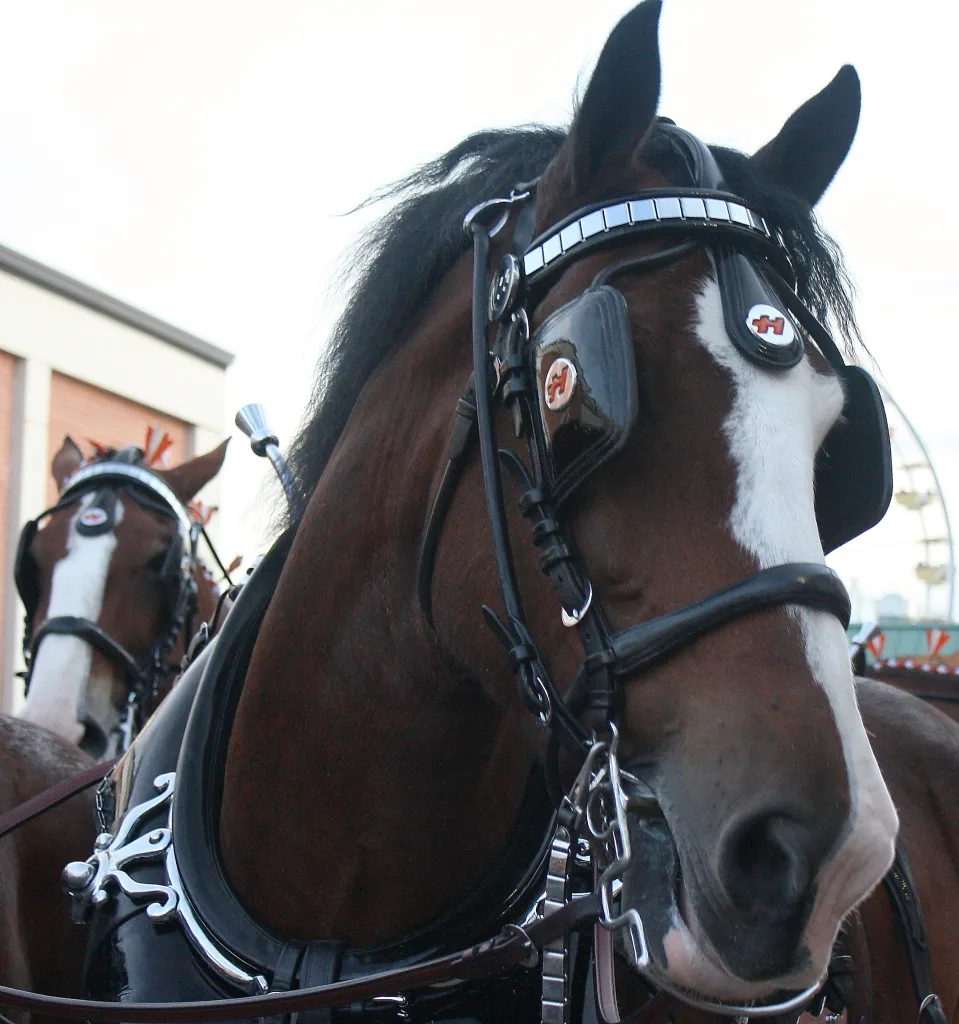Horses are magnificent creatures, known for their strength, agility, and beauty. They have been domesticated for centuries and have played a crucial role in human history. But have you ever wondered why horses wear blinders?
Blinders, also known as blinkers, are a piece of equipment that is attached to a horse’s bridle and covers their eyes. They are commonly used in various equestrian disciplines, such as racing, driving, and even everyday riding. The main purpose of blinders is to limit a horse’s field of vision, particularly their peripheral vision.
So why do horses need their vision restricted? The answer lies in their natural instincts and behavior. Horses have a strong flight response, meaning they are easily spooked or distracted by their surroundings. This can be problematic, especially in situations where focus and concentration are required, such as during races or pulling heavy loads.
By wearing blinders, horses are able to stay focused and prevent themselves from getting easily startled or distracted by their surroundings. The reduction in their field of vision forces them to look straight ahead and concentrate on the task at hand. This is particularly important in urban environments where horses may encounter various distractions, such as traffic, pedestrians, or other animals.
Blinders work by limiting the horse’s peripheral vision, essentially blocking out anything that is not directly in front of them. This allows the horse to stay on track and avoid unnecessary accidents or injuries. It also helps to keep the horse’s attention on the rider or driver, ensuring better communication and control.
It is worth noting that blinders do not completely obstruct a horse’s vision. They still have a clear view of what is directly in front of them, allowing them to see the path ahead and any obstacles that may come their way. Blind spots, however, are created on the sides and rear of the horse, which can sometimes make them more susceptible to surprises from those directions.
While blinders are primarily used for practical purposes, it is important to consider the horse’s well-being when using them. Horses are naturally curious animals and rely heavily on their vision to assess their surroundings and potential threats. Therefore, it is crucial to ensure that blinders are used appropriately and do not cause unnecessary stress or discomfort to the horse.
Blinders play an essential role in the equestrian world by helping horses stay focused and reducing distractions. They limit a horse’s field of vision, allowing them to concentrate on the task at hand and avoid unnecessary accidents. However, it is important to use blinders responsibly and consider the well-being of the horse.
Why Do Horses Wear Eye Covers?
Horses wear eye covers, also known as fly masks, for several reasons:
1. Protection from flies and other biting insects: Fly masks are primarily used to protect horses from flies and other insects that can irritate their eyes and potentially cause infections. The mesh or fabric material of the mask acts as a barrier, keeping these pests away from the horse’s eyes.
2. UV protection: Just like humans, horses can suffer from sunburn and damage to their skin and eyes due to prolonged exposure to the sun’s harmful ultraviolet (UV) rays. Some fly masks are designed with UV-protective materials that shield the horse’s face and eyes from the sun, reducing the risk of sunburn and potential eye conditions.
3. Eye injuries and sensitivity: Horses can be prone to eye injuries, especially if they are involved in activities such as jumping, racing, or trail riding. Fly masks with reinforced or padded eye areas can provide an extra layer of protection, reducing the risk of accidental bumps or scratches to the eyes. Additionally, some horses have sensitive eyes that are easily irritated by dust, pollen, or other environmental factors. A fly mask can help shield their eyes from these irritants.
4. Insect repellent properties: Some fly masks are treated with insect repellents or have built-in insect-repellent properties. These masks not only provide physical protection but also help repel flies and other insects, further reducing the likelihood of irritation and potential infections.
Fly masks are an essential piece of gear for horses, offering protection from flies, UV rays, eye injuries, and environmental irritants. They help ensure the horse’s comfort and well-being, allowing them to enjoy their activities without unnecessary discomfort or health risks.

Why Do They Put Blinders On Horses In Pasture?
Blinders are sometimes used on horses in pasture to prevent them from being easily spooked or distracted by their surroundings. Here are the reasons why blinders are used in pastures:
1. Reducing Distractions: Horses have a natural instinct to be alert and aware of their surroundings. In a pasture, there are often other horses, animals, or objects that can catch a horse’s attention and cause them to become anxious or unsettled. By wearing blinders, the horse’s field of vision is limited to what is directly in front of them, reducing the chances of them getting distracted and allowing them to focus on grazing or resting.
2. Preventing Aggression: Horses are social animals, but they can also be territorial and display aggression towards each other, especially during feeding times. When horses wear blinders in a pasture, their peripheral vision is limited, reducing the chance of them seeing other horses approaching and potentially triggering aggressive behavior. This can help maintain a more peaceful and harmonious environment among the horses.
3. Minimizing Injuries: In a pasture setting, there may be hazards such as fences, trees, or other objects that horses can accidentally run into or get tangled in. By wearing blinders, horses are less likely to be startled by sudden movements or objects in their peripheral vision, which can help prevent accidents and injuries.
4. Promoting Calmness: Horses are prey animals and can easily become anxious or stressed if they feel threatened or perceive danger. By wearing blinders, horses may feel more secure and less vulnerable, as they are unable to see potential threats from all directions. This can promote a sense of calmness and reduce anxiety in the horse, allowing them to relax and graze peacefully.
It’s important to note that blinders should be used responsibly and only when necessary, as they can limit a horse’s natural ability to be aware of their surroundings. It is always recommended to consult with a knowledgeable equine professional before using blinders on horses in pasture.
Can A Horse See With Blinders On?
Horses wearing blinders have their rear and side vision restricted, allowing them to focus primarily in a forward direction. The purpose of blinders is to limit distractions and keep the horse focused on the task at hand, such as pulling a carriage or participating in a race. However, it is important to note that blinders significantly reduce a horse’s overall field of vision.
Typically, a horse without blinders has a visual range of approximately 180 degrees. However, when blinders are worn, this range can be reduced to as little as 30 degrees, depending on the size and depth of the blinders. This means that the horse’s ability to see objects or potential threats on its sides or behind is greatly diminished.
The reduction in vision caused by blinders may initially seem restrictive, but it serves a purpose in certain activities. By limiting the horse’s peripheral vision, blinders help prevent distractions and keep the horse focused on the path ahead. This can be particularly important in crowded or high-stress environments, where maintaining concentration is crucial for safety and performance.
While horses wearing blinders do have some limited vision, their ability to see objects or movements on their sides or behind is significantly reduced. The use of blinders helps keep the horse focused and less prone to distractions, especially in situations where concentration is vital.
Why Do Amish Horses Have Blinders?
Amish horses are often seen wearing blinders, which are a type of device that covers their eyes. The purpose of blinders is to limit the horse’s peripheral vision and focus their attention straight ahead. This is particularly important for horses used in the Amish community, as they are frequently pulling carts or carriages on public roads.
There are a few reasons why Amish horses wear blinders:
1. Safety: One of the main reasons for using blinders is to ensure the safety of both the horse and the people around them. By limiting the horse’s field of vision, blinders help prevent distractions and keep the horse focused on the path ahead. This is especially crucial when traveling on busy roads with various vehicles and potential hazards.
2. Reduce spooking: Horses can be easily spooked by sudden movements or unfamiliar objects in their peripheral vision. By wearing blinders, Amish horses are less likely to be startled by passing cars, pedestrians, or other animals on the road. Blinders help to minimize the horse’s reactions to external stimuli, making them more predictable and easier to control.
3. Maintain forward momentum: Amish horses are often used for work purposes, such as pulling heavy loads or carts. By limiting their vision to what is directly in front of them, blinders help maintain their focus on the task at hand. This encourages the horse to move forward steadily and reduces the chances of them getting distracted or veering off course.
It’s important to note that blinders are not the only form of visual restriction used for Amish horses. Some horses may also wear blinkers, which are smaller attachments that cover only a portion of their eyes. Blinkers serve a similar purpose to blinders but allow for slightly more peripheral vision.
The use of blinders for Amish horses is a practical and safety-oriented approach. It helps keep the horses focused, minimize distractions, and ensure smooth and controlled movement on the road.

Conclusion
Horses are magnificent animals that have been domesticated and utilized by humans for various purposes throughout history. They possess incredible strength, speed, and agility, making them ideal for tasks such as pulling wagons, racing, and even serving as loyal companions. However, horses also require proper care and protection to ensure their well-being.
One important aspect of horse care is the use of fly masks. These masks not only protect horses from bothersome flies and other biting insects but also provide UV protection for their sensitive face and eyes. Some fly masks are even treated with insect-repellents to provide an additional layer of defense.
Another element of horse gear is blinders. These are commonly used when horses are pulling loads or racing. Blinders help to reduce a horse’s field of vision, allowing them to stay focused on their tasks and ignore distractions around them. By covering the rear and side vision, blinders force horses to concentrate solely on moving forward.
It is worth noting that blinders can significantly limit a horse’s vision, reducing their range from 180 degrees to as little as 30 degrees. This reduction in vision is crucial for horses used in urban environments, such as those pulling wagons in cities. By blocking out distractions and focusing their attention straight ahead, blinders help ensure the safety of both the horse and the people around them.
In some cases, horses may require more than blinders to reduce their vision on open roads. For instance, Amish individuals often purchase standardbred horses that have been conditioned to react to anything moving alongside them, making it necessary to further restrict their vision. This emphasizes the importance of considering the individual needs of each horse when selecting appropriate gear.
Horses are incredible creatures that require proper care and protection. Fly masks and blinders are just two examples of the gear used to ensure their well-being and safety in different situations. By understanding and utilizing these tools effectively, we can provide horses with the support they need to thrive in various environments and fulfill their roles as trusted companions and working animals.
